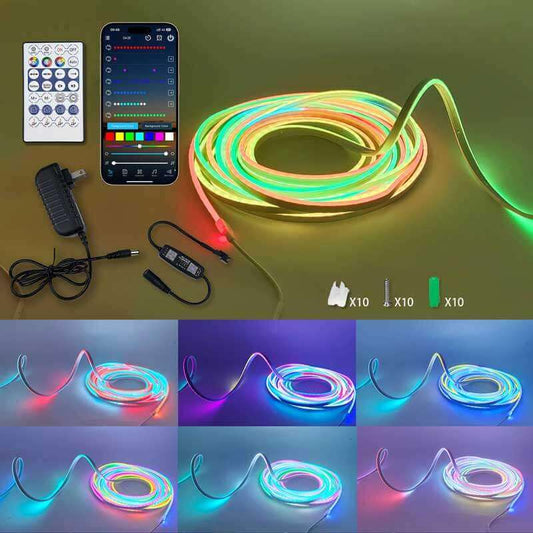Where should you not use LED lights?
Share
While LED lights are versatile and energy-efficient, there are specific situations or locations where they may not be the ideal choice. Understanding these limitations ensures you make the most of LED technology without compromising performance, safety, or aesthetics. so we need to know where can use light or not.
1. Enclosed or Poorly Ventilated Fixtures
- Why not: LEDs generate heat at their base, and while they run cooler than incandescent bulbs, they still require good ventilation to dissipate heat. Enclosed fixtures can trap heat, reducing the lifespan of the LED.
- Examples: Fully enclosed ceiling lights, globes, or small decorative fixtures.
- Alternative: Use LED bulbs specifically rated for enclosed fixtures.
2. High-Heat Environments
- Why not: Extreme heat can damage the electronic components of LEDs, reducing efficiency and longevity.
- Examples: Saunas, industrial ovens, or outdoor areas with prolonged direct sunlight and high temperatures.
- Alternative: Opt for heat-resistant LED models or use alternative lighting.
3. Areas Requiring UV or Infrared Light
- Why not: LEDs do not emit ultraviolet (UV) or infrared (IR) light, making them unsuitable for specific applications.
-
Examples:
- UV light for sterilization or curing adhesives.
- IR light for security cameras or remote controls.
- Alternative: Use specialized UV or IR lighting.
4. Locations Requiring Uniform Warmth
- Why not: LEDs emit very little heat compared to incandescent or halogen bulbs, which can be a drawback in applications where light doubles as a heat source.
- Examples: Reptile terrariums, food-warming displays, or areas requiring ambient warmth.
- Alternative: Use incandescent or heat lamps where heat is needed.
5. Extremely Cold Locations (Without Proper Design)
- Why not: While many LEDs perform well in cold conditions, substandard LEDs may struggle in extremely cold temperatures, potentially affecting their performance.
- Examples: Outdoor lighting in freezing climates or cold storage facilities.
- Alternative: Choose high-quality LEDs designed for cold environments.
6. Aesthetic Lighting Needing Specific Color Rendering
- Why not: Some low-quality LEDs have poor Color Rendering Index (CRI), which can distort colors and reduce ambiance.
- Examples: Art galleries, photography studios, or makeup rooms.
- Alternative: Use high-CRI LEDs (above 90) or specialized lighting.
7. Vintage or Antique Fixtures
- Why not: LED bulbs may not match the aesthetic or compatibility of vintage or antique fixtures designed for incandescent bulbs.
- Examples: Decorative chandeliers, sconces, or Edison-style lamps.
- Alternative: Use filament-style LEDs that mimic the look of incandescent bulbs.
8. Applications Requiring High Voltage
- Why not: LEDs operate on low voltage, so direct high-voltage applications without proper transformers or drivers may cause malfunction or safety issues.
- Examples: Industrial equipment or specialized machinery with high-voltage requirements.
- Alternative: Use appropriate drivers or select lighting that matches the voltage specifications.
YOUWEI TRADE Conclusion
LED lights are incredibly versatile and efficient, but they are not suitable for every situation. By understanding their limitations, you can avoid potential issues and select the right lighting solution for each application. Always check product specifications and consult professionals when needed to ensure compatibility and optimal performance.




